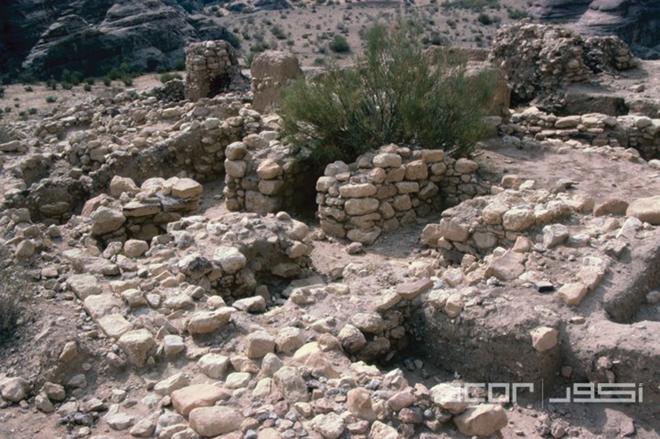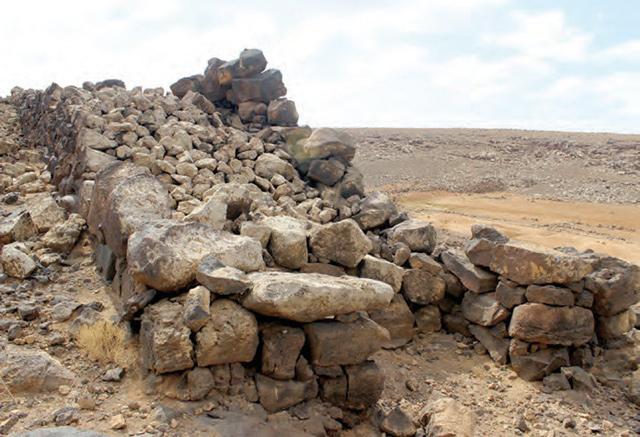You are here
Archaeologist highlights settlement patterns of Neolithic period in Jordan
By Saeb Rawashdeh - Mar 05,2022 - Last updated at Mar 05,2022

Neolithic structures in Beidha, a site located a few kilometres north of Petra (Photo courtesy of ACOR, Rami Khoury collection)
AMMAN — The Neolithic period is rich in archaeological remains that show most of the fundamental developments in human history, noted a Jordanian archaeologist.
“Its sites are located over a great variety of different geographical and environmental zones,” said Professor Emeritus Zeidan Kafafi.
“In Jordan, three major geographical zones were settled in this time, easily noticeable as one travels from west to east: The Afro-Asian Rift [Jordan Valley, Dead Sea and Wadi Araba], the mountain ranges [Irbid, Ajloun, Balqa and Al Sharah] and the Badia [Harra, Hamad, the two great oases of Azraq and Al Jafr, and the Hisma region including Wadi Rum],” Kafafi told The Jordan Times in a recent interview.
Jordan’s prehistoric times were mostly unstudied before the mid-1970s, he continued, adding that only a small number of unsystematic surveys (and very few excavations, such as at Beidha, Wadi Dhobai and Teleilat Ghassul) had been conducted.
The archaeological excavations at the Natufian/Pre-Pottery Neolithic site of Beidha were “the only systematic and intensive work at a Jordanian prehistoric site before the 1970s”. However starting in the early 1980s, a large number of projects were conducted throughout Jordan, the professor added.
“Our current knowledge of the Pre-Pottery Neolithic settlements in Jordan [9500–8600 BC] is still marginal compared to the periods that came after. The identified sites are different in size and function,” Kafafi added, noting that some of them appear to reflect the seasonal remains of small groups of mobile hunter-gatherers, while others show evidence of more permanent occupation and possibly of food production.
Several Neolithic camp sites were investigated in the arid zones of Jordan, one of them being Jabel Qweisa, a Khiamian (a Neolithic archaeological culture of Southwest Asia) site, located in the Hismaarea (Wadi Rum Desert) and dated to the second half of the ninth millennium BC, he said, adding that Jabel Qweisa is a small rock-shelter, discovered and probed during the Wadi Judaid Basin survey in 1979.
“The shelter is situated at the base of a steep sandstone cliff, 1,200 metres above sea level, and has a northern exposure overlooking the Wadi Judaid basin. The archaeological sounding at the site exposed Neolithic and Chalcolithic remains,” Kafafi said.
Furthermore, it has been argued that the site served as a short-term exploitation camp, such as a hunting station. Permanent farming sites were also encountered in what are now the arid zones, such as at Wadi Feynan in the Wadi Araba region, the professor said.
“Stone walls forming semi-circular structures were found at the site of Wadi Faynan representing two separate phases of building. This construction was accompanied by several large pits and midden material accumulated through time between these two structures,” Kafafi added, noting that they were evaluated as non-domestic housing and as evidence for separated zones of activities on site.
“The change of economy is likely to have been accompanied by a development of the social system. In other words, two settlement patterns must have evolved and coexisted, that is camp-sites and small villages. The first belonged to mobile communities, the second to semi-nomad settlers [herders and pastoralists], who built themselves houses,” Kafafi said.
Related Articles
AMMAN — Scholars predominantly began exploring Jordan’s prehistory in the mid-1970s, according to a Jordanian archaeologist.“The archaeologi
AMMAN — According to the professor Zeidan Kafafi, in Jordan, and during the second half of the last century, only very few sites from Pre-Po
AMMAN — Evidence of human occupation in wadis from the Jordanian central massive goes back to the Palaeolithic period as it was evidenced in
















